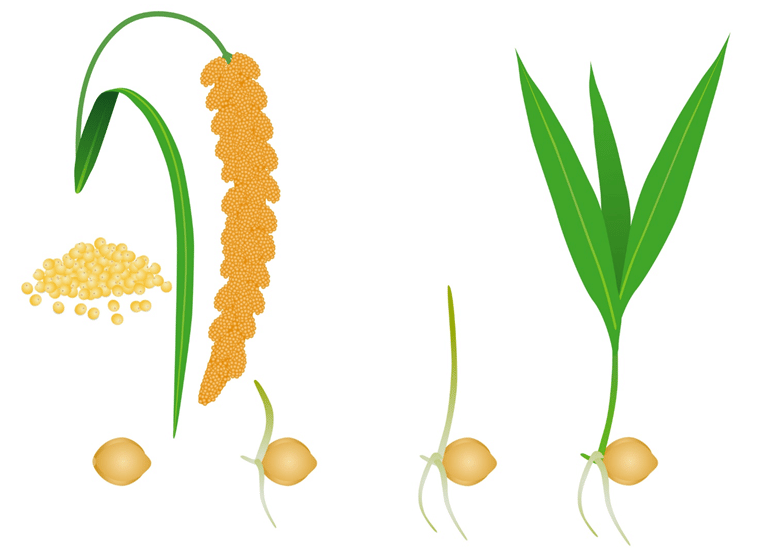As the fall season gets into full swing and winter approaches, the soil seedbank is receiving fresh deposits from plants that are dying or going into dormancy as. This yearly event happens without fail and creates challenges, sometimes nightmares, for many.
In agriculture, the fresh supply of weed seeds replenishes the soil seedbank, a process farmers must prevent as much as possible to limit the germination and emergenceof new weeds. Failure to do so means that newly emerged weeds may go on to produce seed and continue this cycle.
What is the soil seedbank?
The soil seedbank serves ecosystems as a repository of seeds to produce subsequent generations of plants to enable species survival. In many ecosystems, it is the natural storage of seeds in leaf litter and on soil surfaces.
Seeds produced by flowering plants are deposited into the soil, which serves as the bank. When the time is right, the deposited seed will germinate, grow, reproduce, and yield several more seeds that will also be deposited in the soil seedbank.
Soil seedbanks are often a crucial survival mechanism for many plants, and they help maintain the long-term stability of ecosystems. However, for many farmers, gardeners, and land managers, soil seedbanks present a continual challenge and for that reason, they are seen as bad.
Characteristics of a soil seedbank
One distinction relates to the nature of the deposited seeds which can either be short-term (transient) or long-term (persistent). The transient or persistent characteristic is predisposed by nature and is governed by the life cycle of a plant, be it annual, biennial, or perennial.
- A transientsoil seedbank contains seeds that live in the soil for less than a year. Transient seedbanks are relatively easier to deplete as long as there are fewer deposits of new seed each year.
- Seeds from most perennial and some biennial plants tend to be less persistent and make up the majority of seed in a transient soil seedbank.
- A persistent soil seedbank contains seeds that can live in the soil for more than one year. Persistent seedbanks are much harder to deplete.
- Seeds from most annual and some biennial plants tend to be more persistent and make up the majority of seeds in a persistent soil seedbank.
Is the soil seedbank always bad?
Despite being the bane for many farmers, gardeners, and land managers, soil seedbanks do have some positive features. For example, seeds in the seedbank serve as a major source of food for several organisms that live in the soil.
Doing battle with the soil seedbank
Like regular banking, seed deposited into the soil seedbank may germinate and a new plant emerges (withdrawal) to produce thousands more seeds (dividends). Understanding this concept is the first step in getting ready for the battle.
Here are some strategies:
- Prevent plants from depositing new seeds into the soil seedbank.
- In early summer, this can be done by manually removing plants or applying an herbicide, if plants have not set seed.
- In late summer, when most plants have set seed, the best approach is determining which plant species have seeded. This will enable adequate preparationsfor control in the following season.
- Prepare for the battle beginning in spring.
- With the knowledge of what weed species are prevalent in the soil seedbank, adequate preparations can be made for:
- Preemergence control – to prevent most weeds from emerging.
- Early postemergence control – targeting weeds that escape preemergence control efforts.
- Late postemergence control – targeting weeds that escape all prior attempts to control them in an effort to prevent them from producing seeds.
- Be prepared for the unexpected, e.g., invasive weed and herbicide-resistant weed.
- An invasive weed may require a different approach to control it, like a different herbicide.
- Herbicide-resistant weeds often require an herbicide with a different mode of action than the one currently being used to control susceptible plants of the same species.
- Keep a record of what control tactics work and include incidences of invasive weeds and herbicide resistance wherever it is suspected to have occurred.
Battling the soil seedbank is a yearly process for farmers, gardeners, and land managers. Having a battle plan (strategy) helps one stay ahead of the soil seedbank.
Further Reading:
- Staying a Step Ahead of the Soil Seedbank
- Chemical Weed Control
- Postemergence Spraying and Tips for Application
- Late Season Control of Perennial Weed Species
- Pest Biology and Ecology on Your Land
References
Renner, K.A. 2000. Weed Seedbank Dynamics. Michigan State University Extn. Bull. E2717. [Accessed, October8, 2022].
Brewer International has been a leader in land and water chemistry since the 1980s and for over 40 years has proudly served its national and regional distributors.
Our products are used widely across the United States in agriculture, aquatics, forestry, rights of way, and land management.
Our customers trust our dedication to quality ingredients, tried and true formulas, and positive outcomes.


